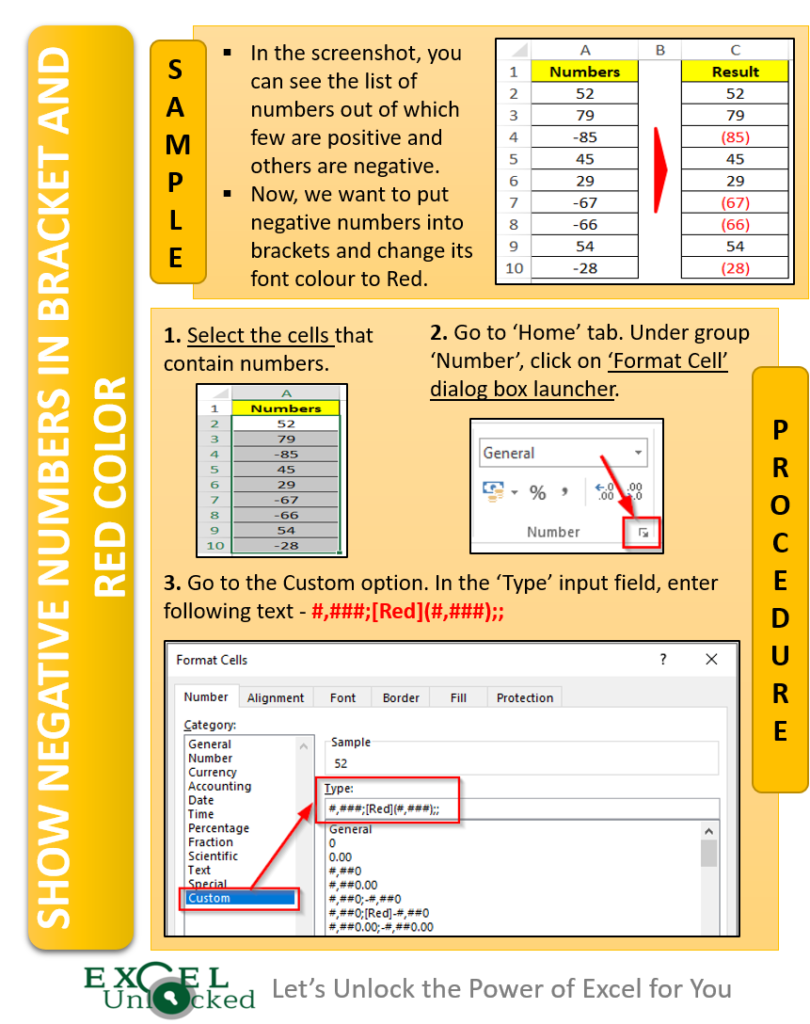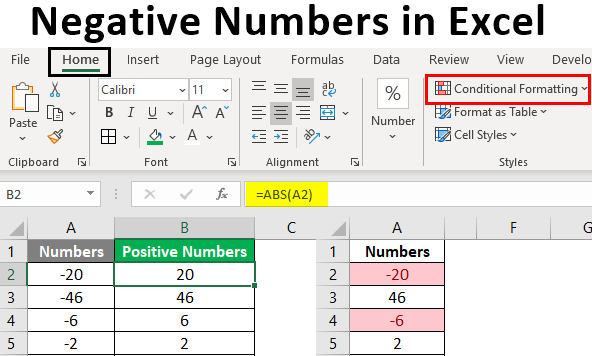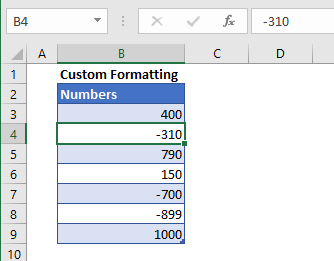
The key benefit of adding custom formatting is that it only controls how the number is displayed without changing the underlying value of that number.Ī cool feature within Excel is the ability to format a cell’s value by pressing CTRL + 1 on any cell. But if none of them meets your requirement, you will have to create your own. Place a specific character width in front or at the backFor example, if your negative format has a bracket but positive format does not, you may want to leave a character width for positive number at the backTo apply, place an underscore followed by the characterįormat 1234.56 with (_(#.#_)) results in ( 1234.Excel has several in-built features to create custom formatting to your numbers. įormat 1234 with # results in 1234Apply 1234 with results in 1234 Color can be ,You can apply conditional formatting for font color, but only two conditions can be applied For each additional comma, further divide the number by additional 1000įormat 1234567 with #,# results in 1,234,567Format 1234567 with #, results in 1.234567Īpply font color to text. in order to align the decimal point in the same columnIf there is a number at the position specified with ?, it does not do anythingIf ? is used in digit and ? is at position shorter than the digit, rounding happensįormat 1234.56 with ?.? results in 1234.6Format the below column with ?.?Īdd thousands separator (comma) to a number- Apply #,# to add comma separator every 3 digits Place a decimal point at the specific location for formatting decimal part and integer partįormat 1234.56 with #.# results in 1234.56 Place the actual number in the specific positionIf there is a number at the position specified with #, it does not do anythingIf # is used in digit and # is at position shorter than the digit, rounding happensįormat 1234.56 with #.# results in 1234.56Format 1234.56 with #.# results in 1234.6 Place a dummy 0 if the specified position does not have a number.If there is a number at the specified position, it does not do anythingIf 0 is used in digit and 0 is at position shorter than the digit, rounding happensįormat 1234.5 with 0.00 results in 1234.50Format 1234.56 with 0.0 results in 1234.6 The below tables shows common notations that are to be used in formatting a value or text Notation If you want to skip one section in the middle, add a semi-colon to indicate the skipped section Custom Format of value and text If one semi-colon is used, the first part applies to positive value, second part applies to negative value If no semi-colon is used, the condition applies to all kind of value Custom comprises 4 sections, separated by semi-colon: Format for positive value Format for negative value Format for zero value Format for text
#Negative sign custom formatting excel code
Since most of them are self-explanatory, this tutorial will only focus on “Custom”.Ĭustom allows you to hard code the format you want. The below screenshot shows a list of formats that you can choose to display. Right click on the cell which you want to change formatting, then choose Format Cells. Finally, double click on the formula Cell and then press Enter. In that case, go to Format Cells and change the format to “General”.

This occurs when you customize a format for the Cell and then decide to change the Cell to a formula.

One common issue due to incorrect format is that a formula displays as text instead of a formula where you visually see the formula with = sign, but not the result value. Similarly, if you display a date from dd/mm/yyyy as mm/yyyy, you don’t lose the day. For example, if you change the format of number 0.3333 to 2 decimal places, it will display as 0.33, but the underlying value is still 0.3333. While you change the display of a value, it does not change the underlying value. You can customize the display of the value in Format Cells, for example, change format dd/m/yyyy to dd-mm-yyyy.

If you type 123, Excel guesses it is a number format. For example, if you type, Excel guesses it would be a Date, Format is dd/m/yyyy, but it would not guess it is a Text.
#Negative sign custom formatting excel how to
This Excel tutorial explains how to use Excel Custom Format in Format Cells to format date, time, number, text, conditional formatting, leading zero, etc.Įxcel Display Time from Date Time What is Excel Custom Format?Įxcel guesses the most appropriate format for the cells when you type something in a Cell.


 0 kommentar(er)
0 kommentar(er)
